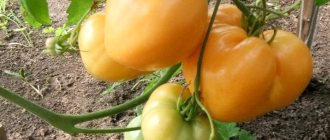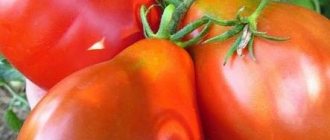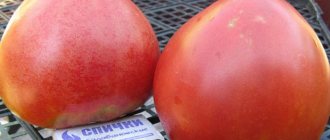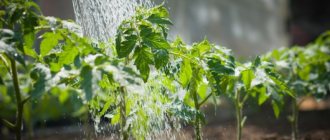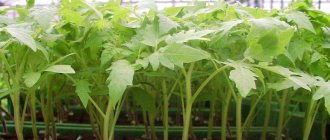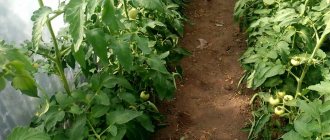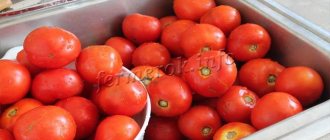Among the new achievements of Russian breeders, it is worth mentioning the Boni MM tomato variety. The plant organically combines those advantages because of which gardeners include it in the list of mandatory varieties for planting on their plots. This is a real explosion of quality: ultra-early, unpretentious, low-growing and tasty. Perhaps the excellent variety of tomatoes was named by analogy with the perfection of the style of the legendary disco band. By the way, on sale, in various descriptions or reviews, this plant is also called tomato Boni M. But you need to know that we are talking about the same variety of tomatoes, which has been included in the State Register for several years.
General description of the variety
Boni MM is a tomato variety that is best suited for growing in the climatic conditions of Russia. Breeders managed to modify it in such a way that it is not afraid of both cold weather and heat.
Tomatoes of this variety were included in the Russian state register in 2001. They are most popular among gardeners in the former CIS countries.
Distinctive features of Boni MM
Boni MM tomato berries are the most common for this crop. They are red in color, round in shape and medium fleshy. The taste is sweet and sour with a tomato aroma. Look at the photo to see what these tomatoes look like.
Boni MM fruits are universal. They are suitable for fresh consumption, whole canning and preparation of tomato products. They are also used as an ingredient in hot dishes.
The main feature of the variety is the timing of harvest ripening. This is one of the earliest ripening fruits. Its berries turn red less than 3 months after the first shoots appear.
One cannot fail to note the short stature of the bushes of this tomato variety. They grow in height to no more than 55 cm, so the plants do not need to be formed and pinched. This makes caring for them feasible for busy summer residents and novice gardeners.
Boni MM is immune to many tomato diseases. Thanks to its early ripeness, it does not have time to become infected with late blight.
This is interesting. The Boni MM tomato does not officially belong to the balcony varieties. Despite this, it is often grown in flowerpots on loggias, producing a bountiful harvest.
Main characteristics
The Boni MM tomato has excellent characteristics for growing in our country. The description of the variety will please even novice gardeners:
| Parameter | Indicators |
| Bush type | Determinant. Standard. It does not exceed half a meter in height. The stems are not very thick, but strong. The bushes are spreading, the foliage is medium. The leaves are small, dark green. The inflorescences are simple. The first inflorescence is formed in the axil of 6-7 leaves, the next ones - after 1-2 leaves. |
| Growing method | Cold-resistant. Mainly grown in open ground. Planting in greenhouses and under film cover is possible. |
| Productivity | Average. One bush ripens 2-3 kg of berries. Just for 1 sq. m place 6-8 plants. Fruiting does not last long; Boni MM produces all the fruits in 2 weeks. |
| Fruit | Average. The weight of one fruit varies between 70-100 g. The berries are bright red inside and outside. There may be a light spot near the base. Tomatoes taste sweet and sour, with a characteristic tomato aroma. The berry contains about 5 chambers with a large number of seeds. The fruits are juicy, with a medium amount of pulp. The taste is sweet and sour. The shape is round, flattened, with slight ribbing at the base. |
| Transportability | High. The skin of Boni MM tomatoes is durable. Therefore, they are suitable for long-distance transportation and long-term storage. |
| Ripening time | Early ripening variety. The fruits ripen 80-90 days after the first shoots appear. |
| Disease resistance | Tomato is not afraid of the main diseases that affect this crop. |
Note! Judging by reviews from gardeners, the Boni MM tomato produces a better harvest when grown in open ground.
Characteristics
The Boni M tomato variety has become popular due to a number of distinctive features. Their characteristics are only positive.
- Ultra-early ripening: fruiting occurs 80-85 days after emergence. This allows the plant to avoid infection with late blight, and makes it easier for the gardener to care for;
- Ripeness occurs quickly in most fruits on the cluster. In almost two weeks, a tomato bush of this variety yields its entire harvest, which allows the bed to be further used for other crops;
- Low bushes allow the gardener to take a break with this variety: the plant does not need to be pinched or tied up. Although, with proper care, the tomato harvest makes it necessary to make a support for the overloaded bush of a low plant;
- Boni M tomatoes were recommended by the authors of the variety as a plant for open ground, but they are excellently grown both in greenhouse beds and in ordinary film shelters. In the northern regions, the variety has become one of the favorite vegetable plants;
- The unsurpassed feature of these tomatoes is their unpretentiousness and resistance to pathogens of fungal infections. Even in rather poor soil and in cool, rainy weather, the yield of their bushes does not fail;
- Transportability and keeping quality make it possible to grow Boni M tomatoes as a commercial variety.
Advice! Tomatoes, sown in early May under shelters, are planted in holes in early June, diving at the same time.
How to grow tomato seedlings
Boni MM is one of the few varieties that are grown in our country not only by seedlings. In cities with warm climates, it is possible to sow seeds directly into the beds.
Methods of growing Boni MM tomato depending on the region:
- In the northern regions, tomatoes are grown only by seedlings. In this climate, seeds are sown as early as March.
- In central Russia, it is possible to sow seeds directly into open ground. Planting material is sown at the end of May. The top of the seedlings is covered with film.
- In the southern regions, seeds are sown in open ground in early May or late April. If there is frost, the seedlings are covered with film.
You need to understand that when planting seeds in the ground, the harvest will appear much later than when growing tomatoes in seedlings. In the first case, Boni MM tomatoes will ripen in August, and in the second - in June or early July.
Preparation of planting material
Most gardeners prefer to grow Boni MM tomatoes using seedlings. Indeed, in this case, your tomatoes will appear on the table in June.
Before sowing seeds, they need to be prepared. First of all, check the expiration dates of planting material.
Gardeners say that the germination rate of Boni MM seeds is 60%. Therefore, it is recommended to keep the planting material in salted water for 30 minutes before sowing. Specimens that have sunk to the bottom are suitable for planting.
Treating the seeds will prevent plant infection. To disinfect planting material, soak it for half an hour in a weak solution of potassium permanganate or for 12 hours in a soda solution.
To speed up the germination of seeds, they are treated with a growth stimulator. To do this, they are immersed in a solution of Epin or Fitosporin. Folk remedies are also used, for example, water with honey or aloe juice.
Selection of containers and soil
Tomato Boni MM is not a rare or collectible variety. Therefore, peat tablets are rarely used for its cultivation. Seedlings of such tomatoes are cultivated in the most conventional way.
For sowing seeds, choose wide but shallow containers. Stores sell special boxes and plastic trays. They also use improvised materials, for example, plastic dishes, cut-off juice packs and bottles.
Plants are planted in separate containers. Use special or homemade pots. To make them, use plastic cups, cut-off bottles, etc.
Soil mixture for tomatoes is sold in specialized stores. They also prepare it themselves. To do this, mix peat, black soil and humus in equal parts. Instead of peat, sand and crushed coconut substrate are also used.
To enrich the soil, ash and superphosphate are added to it. If the acidity of the soil is increased, then lime is not added.
To reduce the likelihood of plant infection, you need to disinfect the soil and containers. For soil use a weak solution of potassium permanganate, and for containers a strong one.
Sowing seeds
After the preparatory work, they begin sowing the seeds. To do this, fill the container with soil so that it does not reach the edge by 3 cm.
The seeds are laid out on the soil in rows. There should be a distance of at least 2 cm between the seeds.
The seeds are sprinkled on top with a centimeter layer of soil. The soil is not compacted.
After this, the soil is moistened with a spray bottle. Use warm, settled water.
Containers with planting material are covered with film and placed in a warm place. Before the seeds germinate, they do not need light. The warmer the room is, the faster the seeds will germinate.
Seedling care
The rules for caring for tomato seedlings are the same for all varieties. The list contains the most important of them:
- Before seeds germinate, it is important to monitor the condition of the soil. If it is dry, it is moistened with a spray bottle. When mold appears on the soil, the affected layer is removed. Then the soil is watered with a light pink solution of potassium permanganate. The film is opened slightly to allow the soil to dry out a little.
- After seed germination, containers with seedlings are transferred to a well-lit place. The lack of lighting is compensated with the help of fluorescent lamps.
- The film is removed a week after the seeds germinate. Before this, the sprouts need extreme humidity, which is created by such an improvised greenhouse.
- Water the tomatoes at the root. It is important that the liquid does not fall on the greenery of the plant. Use only settled water at room temperature.
- Plant seedlings into individual pots.
- Fertilizing is applied 3 times during the entire period of growing seedlings. The first feeding is done 2 weeks after picking the plants. The next one is in another 14 days. The last time fertilizer is applied is 3-5 days before transplanting the plants to a permanent location. Use complex fertilizers.
- Before planting seedlings in a permanent place, they need to be hardened off. Within two weeks, the plants are taken outside, gradually increasing the time they spend in the fresh air.
Advantages and disadvantages
Pros:
- The plant is compact; 6-8 bushes can be placed per 1 m².
- Gives the very first tomatoes for vegetable salads.
- Harmonious ripening of fruits.
- Versatility of use. Small tomatoes with thick skins are excellent for whole-fruit canning.
- Do not wrinkle during transportation.
- Due to the early yield of fruits, the plants do not have time to become infected with late blight.
- High percentage of seed germination.
- They continue to form ovaries during sudden weather changes.
- Can be grown by sowing directly into the garden bed.
Minuses:
- When kept in greenhouses, taste and yield decrease.
- Does not grow well in poor, dense soils.
- The packet of seeds states that the stem does not need to be tied, but this is not the case. Under the weight of the harvest, the plant collapses, so the gardener will have to tinker with the garter of miniature branches covered with fruits.
Growing tomatoes
Tomato Boni MM is an easy-to-care variety. Therefore, even a novice gardener can cope with its cultivation.
Boni MM is grown in a greenhouse and in open ground. The second planting method is suitable even for the middle zone of our country.
Tomatoes are planted in open ground when the soil warms up. This usually happens in May.
Planting tomatoes in a permanent place
Tomato beds have been prepared since autumn. To do this, they are dug up and cleared of weeds. Organic fertilizers (manure) are added to the soil. The soil needs to be tested for acidity. If the indicators are elevated, this can be easily corrected with the help of lime.
In the spring, the beds are dug up again. They are cleaned from plant roots.
Holes are dug for tomatoes. The distance between the rows should be 30-40 cm, and between the recesses for plants 50 cm. The holes are arranged in a checkerboard pattern. Thus, for 1 sq. m fits from 6 to 9 plants.
Before transplanting, the seedlings are removed from the pots along with a lump of earth. Plant roots form in the center of the hole. After this, the holes are filled with warm water and buried.
The next watering is possible two weeks after picking the plants. At the same time, the first feeding is done.
Rules for caring for Boni MM
Tomato Boni MM is low-growing. The abundance of the harvest is ensured by its spreading nature. Therefore, this variety does not require shaping.
The bushes also do not require pinching. Only the yellowed lower leaves need to be removed. Gardeners also recommend removing ugly inflorescences.
Since Boni MM tomato bushes are considered low-growing, they do not need to be tied up. It is important not to allow the fruits to lie on the ground. Therefore, some farmers still tie the bushes to a support.
Water the tomatoes as the soil dries. Watering should be plentiful, but infrequent.
The soil must be loosened after each watering. This will prevent the formation of a crust that interferes with root air exchange.
It is important to pay enough attention to feeding plants. Over the entire season, liquid fertilizers are applied at the root 3-4 times and foliar feeding is applied 1-2 times.
To spray plants, products that include boron are used. They will speed up the formation of ovaries.
This is interesting:
Early ripening, low-growing, pink tomato variety “Pink Bush f1”.
Why every gardener should at least once grow a Bobcat tomato - the best of the low-growing ones.
Mistakes of novice gardeners
When growing tomatoes, novice gardeners often make mistakes that lead to deterioration in the quality of the crop and even death of the plants.
The list contains the most common of them:
- Watering in the heat of the moment. This will increase the chances of burns occurring on the plants. You need to moisten the soil in the morning or evening.
- Use for irrigation with ice water. This will cause the roots to rot. For irrigation, use only settled water at room temperature.
- Planting tomatoes in shaded areas of the garden. Tomatoes are a light-loving crop. With insufficient light, the yield decreases and the taste of the fruit deteriorates.
- Removing too much greenery from the bush. This will result in the harvest becoming less abundant and the tomatoes watery. Only damaged leaves from the bottom of the plant need to be removed.
Diseases and harmful insects
Tomato Boni MM is immune to major tomato diseases. Therefore, it is rarely affected by viruses and fungi. Due to its early ripeness, this tomato variety rarely suffers from late blight.
Attention ! Despite the variety’s resistance to diseases, prevention cannot be neglected. It is important to disinfect not only seeds, planting containers and soil, but also all garden tools that will interact with plants.
Compliance with the rules of care is an important stage in protecting plants from diseases. After all, waterlogged and overdried soil is the main cause of plant infection.
It is important to protect tomatoes from harmful insects. Pests not only damage greens and tomato fruits, but also transmit pathogens of viral and fungal diseases.
To prevent the appearance of pests, the bushes are treated with infusion of celandine. When aphids appear, use a soap solution. To protect against mole crickets, eggshells are scattered near plants.
Review your tomato beds regularly. All pests are removed manually.
Pest and disease control
Boni MM refers to varieties that are not affected by various diseases and pests. The main type of protection is early ripening, due to which diseases do not have time to develop on the fruit.
Slugs pose a danger to tomatoes. The variety is also susceptible to attack by mole crickets and wireworms that live in the ground. To protect the bushes from the harmful effects of pests, you will need to use special products, such as Karate or Actellik.
Photo review of damage to tomatoes by slugs from those who planted Boni MM:
One of the methods of control is soil treatment. You will need water with a solution of laundry soap. This is an effective option for neutralizing ticks and slugs. But some insects can only be controlled with the use of special preparations.
Features of growing in open and protected ground
Tomato Boni MM is grown mainly in open ground. It is under such conditions that this variety gives the best yield indicators.
When growing in open ground, you need to cover the plantings at night for the first two weeks. This will protect them from night frosts.
Mulching the soil will retain moisture and protect roots from freezing and pathogens. Burlap or dry grass is used as mulch.
In greenhouses it is important to maintain optimal humidity. To do this, regularly ventilate the room by opening the windows.
Useful video
Finally, we recommend watching a short video about the Boni MM tomato variety.
| Early ripening | Mid-late | Mid-early |
| Raspberry Viscount | Yellow banana | Pink Bush F1 |
| The Tsar Bell | Titanium | Flamingo |
| Kate | Slot F1 | Openwork |
| Valentina | Honey fireworks | Cio Cio San |
| Cranberries in sugar | Miracle of the market | Supermodel |
| Fatima | gold fish | Budenovka |
| Verlioka | De Barao black | Major F1 |
If you find an error, please select a piece of text and press Ctrl+Enter.
Farmer reviews
All farmers note the unpretentiousness of the Boni MM tomato. However, not everyone likes the taste of its fruits.
Irina Metelkina, Shumerlya: “I have been growing Boni MM for more than 10 years. Of course, the tomatoes have a mediocre taste, but they ripen earlier than others. Already in June there are tomatoes on the table. Very easy to grow. Requires minimal maintenance."
Andrey Pokhvalenko, Zheleznogorsk: “I’ve been familiar with the Boni MM tomato for several years. I grow it at the dacha. I water it once a week. I tie it up, because otherwise the berries lie on the ground. Otherwise, I don’t see any difficulties in care.”
Pros and cons of the variety
The high yield of the Boni MM variety and the fairly elastic skin of tomatoes allow them to be grown for sale.
One of the main advantages of the variety is early ripening, however, its advantages are not limited to this alone.
pros
- small size of bushes - plants do not need staking, despite abundant fruiting;
- tomatoes do not need to be pinched;
- excellent immunity to late blight and other diseases typical of the crop;
- immunity to sudden temperature changes;
- simultaneous ripening of the crop (almost all fruits are harvested in 8-14 days, after which the beds can be adapted for other late crops);
- good keeping quality of ripened tomatoes;
- excellent transportability;
- possibility of growing several bushes on the balcony.
Minuses
- relatively small fruit sizes (but this is convenient for whole-fruit preservation);
- demanding on the composition of the soil - a bountiful harvest can only be obtained on fertile soil.
Advice! Despite the fact that in general the Boni MM variety does not need support, if there is abundant fruiting, it is better to tie up the plants. Otherwise, the shoots may not be able to withstand the weight of the fruit.
Care
Superbomb tomatoes are unpretentious and do not require much care. The bushes like to be watered at the root, abundantly, but not very often. The only larger amount of moisture is required at the stage when the fruits are growing most intensively. If possible, you should avoid getting moisture on the leaves, fruits, and trunk, which can contribute to the onset of fungal infections of tomatoes. In addition, tomatoes do not like high air humidity. After planting and the first watering, the soil needs to be mulched. In this case, the most optimal irrigation option, allowing the bushes to develop a strong root system, is the organization of drip irrigation systems for the soil.
It is recommended to regularly feed “Superbomb” tomato bushes with complex fertilizers, including those containing the microelements boron and potassium. Another element of caring for tomato bushes is tying branches to supports, which is necessary to hold ripening tomatoes. Also, for bushes with a height of about 0.8 m and above, it is necessary to regularly carry out the pinching procedure, that is, remove excess branches. Moreover, in order to maximize productivity, the bush is formed into 2-3 stems.
“Superbombs” are resistant to most diseases common to tomato crops. The only significant drawback in this regard is the susceptibility of tomatoes to late blight and Alternaria, as well as some pests (wireworms, whiteflies, mole crickets, caterpillars). To reduce harm from late blight and alternaria, it is recommended to periodically use the chemical “Ordan”, intended for spraying bushes, but the last spraying must be carried out at least 20 days before harvest. To get rid of dangerous whiteflies, mole crickets, wireworms, and caterpillars, you can use the product “Confidor”, the chemical “Thunder” (as well as an infusion of hot pepper or a solution of vinegar), the drug “Bazudin”, the chemical “Strela”, respectively.
“Superbomb” tomatoes can be classified as mid-season tomato varieties. The period of complete ripening of vegetables is set at 105-115 days from the moment of full germination. It is advisable to complete harvesting before the cold snap, corresponding to a drop in ambient temperature to +8 0C. This is due not only to the cessation of tomato growth, but also to an increased risk of tomato diseases.
Sowing seedlings: sowing dates
When to sow Boni-MM tomato seedlings? Reviews about this variety indicate that the specific timing depends on how early the gardener wants to get the first ripe fruits. In order to begin mass harvesting of ripe tomatoes in early June, sowing must be done in early March. For the northern regions of Russia, sowing seedlings of these tomatoes in the last third of March, followed by planting young plants under film cover, is more suitable.
By the way, the Boni-MM tomato, described above, can be grown without seedlings, that is, by direct sowing of seeds in the ground. It is best to do this during a period when there is no risk of return frosts and the soil is warm enough. The age of seedlings at the time of planting in the ground must be at least 30 days.
Secrets of gardeners
Experienced gardeners have their own interesting tricks for increasing the yield of tomatoes and growing them successfully:
- After the first abundant watering, the plants are lightly earthed up. This technique allows the seedling to form new roots, which helps strengthen the young bush;
- Although the bush of this variety is strong, still during the ripening period, if the clusters are full of fruits, you need to cover the soil well with a thick layer of mulch. There are two goals here: the bed does not dry out; the fruits, even drooping down with an overloaded brush, will remain clean;
- They get a super early harvest, almost 5-6 days earlier than the agreed upon date, by splitting the plant stem. Using a sharp knife, the bottom of the stem is cut lengthwise, then a stick is inserted into the hole, which prevents the stem from growing together. Stress forces the bush to devote all its strength to the formation of fruits.
- They also regulate the size of the fruits, cutting off the smallest ones that are at the end of the cluster. The classic technique recommends picking brown tomato berries from the first bunch for ripening, so that the fruits on the next ones will be larger and more uniform.
Having once planted powerful and compact tomato bushes of this variety, gardeners usually never part with them.
Tomato Boni M: reviews, photos, yield
Among the new achievements of Russian breeders, it is worth mentioning the Boni MM tomato variety. The plant organically combines those advantages because of which gardeners include it in the list of mandatory varieties for planting on their plots. This is a real explosion of quality: ultra-early, unpretentious, low-growing and tasty. Perhaps the excellent variety of tomatoes was named by analogy with the perfection of the style of the legendary disco band. By the way, on sale, in various descriptions or reviews, this plant is also called tomato Boni M. But you need to know that we are talking about the same variety of tomatoes, which has been included in the State Register for several years.
Read also: Tiger cub zucchini squash: description, photos, reviews
